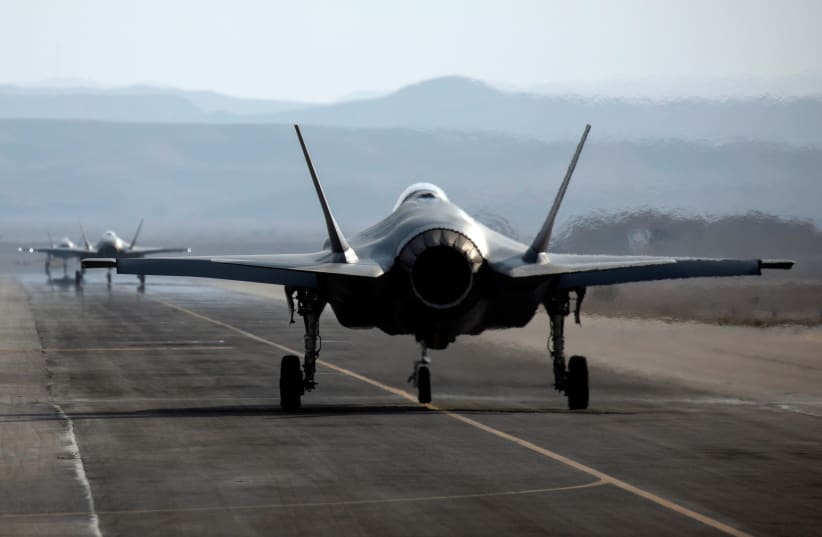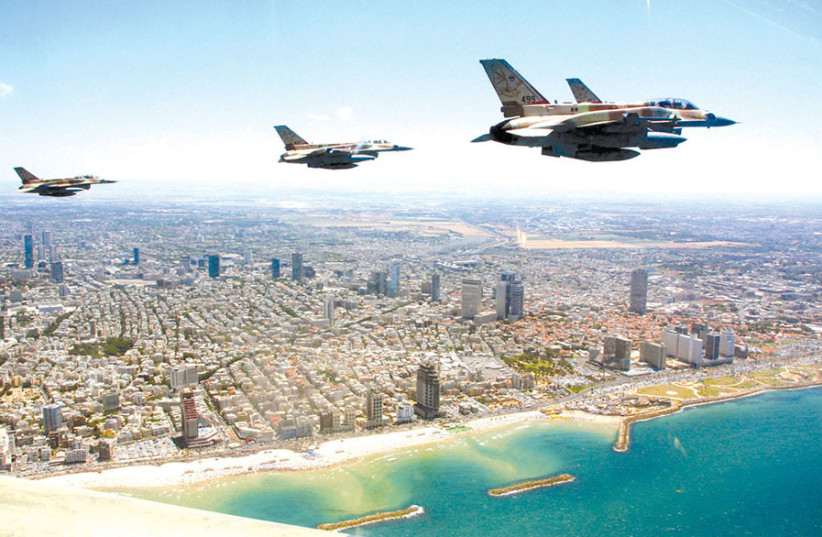The IDF will simulate striking targets far from Israel’s borders with a large number of planes while simultaneously acquiring new targets on various fronts in real-time during its largest military drill in history.
The drill is unique and unprecedented in scope and will enable the army to maintain a high level of readiness in an ever-changing region, the IDF said. It aims to improve the military’s capabilities in an intense, multifront and prolonged war on all its borders.
During the drill, the IAF will practice striking targets far from Israel’s borders, while troops continue to contend with a multifront war on its borders.
The IDF is planning several military options against Iran should the nuclear talks between the West and the Islamic Republic fail, and it will practice one of the possible options during the exercise.
The military will also implement the lessons learned from Operation Guardian of the Walls throughout the entire month. During the 11 days of fighting last year, there was heavy rioting in those areas as well as in mixed Arab-Israeli cities such as Lod and Jaffa. Two people were killed, and several civilians were injured.
As part of the drill, the IDF will simulate scenarios in which there is rioting twice as violent as last year.
The military wants to be able to send troops before violence breaks out, and not in response to the violence, and it will work to keep roads open in areas in the Negev and in the Wadi Ara area of the North.
Thousands of soldiers and reservists are taking part in the drill, dubbed Chariots of Fire. All commands, including the IAF and Israel Navy and regular and reserve forces, will take part.
The goal of the three-week drill is to improve the readiness of the entire military and examine the ability of troops to carry out a powerful and prolonged campaign against enemy forces on various fronts simultaneously.
The IDF created a unique multidisciplinary center subordinate to the Operations Directorate two years ago to harness intelligence using digital and advanced artificial-intelligence capabilities. It aims to create a “target incubator” that produces hundreds of targets relevant to developments in the fighting to allow the military to continue to fight as long as it needs to with more and more new targets.
According to the military, gathering intelligence on real-time targets is the most challenging task, and the center will drill on gathering new real targets on all fronts during the exercise. It will also practice executing various operational plans to strike targets already in the bank.
Using an AI platform known as The Gospel, which also uses Natural Language Processing, it centralizes all data on terrorist groups onto one platform that enables the analysis and extraction of the intelligence. The military believes that using AI helped shorten the length of the fighting; it has been effective and quick in gathering targets using super-cognition.
The military divides its targets into four different groups: targets of the enemy’s power, targets of quality, targets that allow the enemy to continue fighting such as infrastructure and real-time targets.
ALL TARGETS gathered by the platform are double-checked by officers in the center before they are approved. Learning from Operation Guardian of the Walls, the center also has a legitimacy team that can provide detailed intelligence on targets struck to partners as well as declassified intelligence to the press.
Since the establishment of the center, the number of targets has increased by about 400%, with thousands of targets on the northern front and in the densely populated Gaza Strip.
And in the North, using innovative intelligence and advanced technology, the IDF’s target bank in the Northern Command is 20 times larger than the target bank the military had in 2006, with thousands of targets ready to be attacked, including headquarters, strategic assets and weapons storehouses.
Following Operation Guardian of the Walls, during which rockets were fired from southern Lebanon, violence in the West Bank and inside Israeli cities, together with more than 4,000 rockets and mortars fired from Gaza, the military understands that a future war will see conflict on several fronts simultaneously.
While visiting the exercise on Monday, Defense Minister Benny Gantz said the defense establishment was “preparing for various scenarios against our enemies in the various theaters and against Hezbollah and Hamas, which also operates from Lebanon.”
“The combination of training, operational activity and strengthening civil resilience makes up our complete paradigm of protecting the North and the entire State of Israel,” he said.
The IDF aims to carry out massive bombardments with thousands of munitions against enemy targets from the land, sea and air.
The drill aims to improve the cooperation between the IDF, various government ministries, security organizations and civilian bodies’ abilities to transition from routine to a full emergency scenario with multiple areas that are constantly evolving. It will also examine logistics and firepower issues that could face troops in a war.
During the first week of the drill, the IDF trained on increasing readiness in the northern front while strengthening the country’s defenses and dealing with challenges developing in the West Bank and Gaza.
In the second week, the military is simulating dealing with a limited deterrence campaign to an all-out war. The IDF will simulate transitioning from routine to emergency scenarios with challenges facing the home front during an outbreak of war, including evacuating civilians and hospitals.
The third week will see the military contend with a full-scale war on multiple fronts and multiple dimensions. It will include two large-scale division exercises of regular and reserve forces from the 162nd Division and 98th Division to practice offensive maneuvers on the northern front as part of a broad campaign that will see troops also defending the home front.
Troops from the 98th Division and Special Forces will train in Cyprus during the fourth week of the drill.
The exercise will also see the implementation of the IDF’s Victory concept, with an emphasis on achieving operational goals at a fast pace, with attacks, defense and multidimensional maneuvering.
Alongside the massive exercise, the military will continue with its operation to thwart terrorist attacks in the country, the IDF said.

